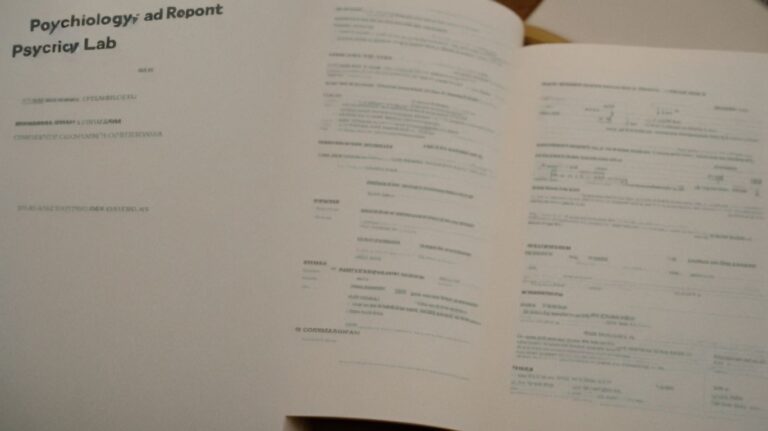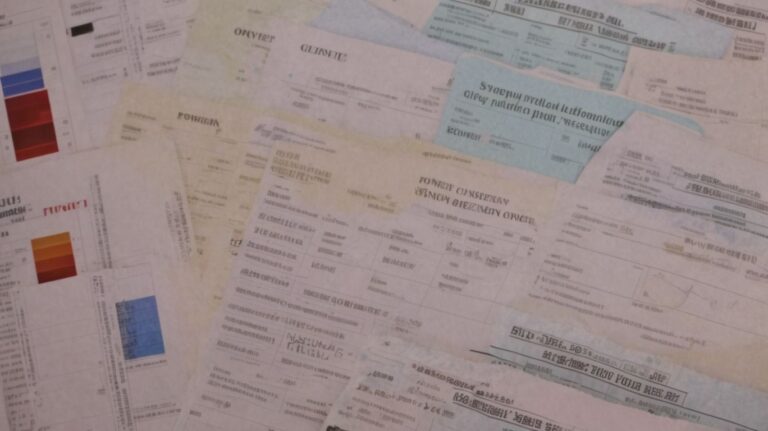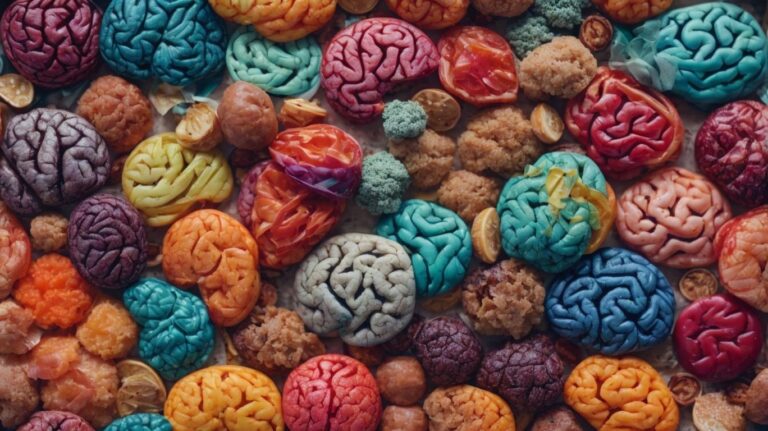Deception is a complex and intriguing aspect of human behavior that can manifest in various forms. From white lies and exaggeration to fabrication and concealment, people deceive others for a multitude of reasons.
But how can one detect deception? Through nonverbal cues, inconsistencies in speech, changes in vocal pitch, and microexpressions, individuals can uncover the truth.
By employing strategies like building rapport, asking open-ended questions, and paying attention to nonverbal cues, along with techniques such as the Reid Technique and polygraph testing, the art of detecting deception becomes a fascinating study in psychology.
Join us as we explore the intricacies of deception and the tools to uncover the truth.
Contents
- 1 What Is Deception?
- 2 Why Do People Deceive Others?
- 3 What Are the Types of Deception?
- 4 How Do People Detect Deception?
- 5 What Are the Strategies for Detecting Deception?
- 6 What Are the Techniques for Detecting Deception?
- 7 Frequently Asked Questions
- 7.1 What is the art of detecting deception?
- 7.2 Why is detecting deception important?
- 7.3 What are some common techniques used to detect deception?
- 7.4 Can anyone learn the art of detecting deception?
- 7.5 What are some challenges in detecting deception?
- 7.6 How is the art of detecting deception used in the real world?
What Is Deception?
Deception is the act of misleading others through false impressions or statements, a phenomenon extensively studied by experts like Dr. Ekman in the field of behavioral psychology.
Dr. Ekman’s groundbreaking research on microexpressions and body language has shed light on the subtle cues that betray deceptive behavior. These minute facial expressions or involuntary gestures can often reveal hidden truths that contradict spoken words.
Lie detectors, also known as polygraphs, are commonly used tools to detect deception by measuring physiological responses like heart rate, blood pressure, and sweating. While not foolproof, these devices provide valuable insights into the physiological changes that accompany lying.
Behavioral psychology delves into the intricate mechanisms behind deceptive behaviors, exploring factors such as motivation, cognitive biases, and social influences that drive individuals to deceive others. By understanding these underlying dynamics, researchers can offer valuable insights into the complexities of human deception.
Why Do People Deceive Others?
People engage in deception for various reasons, including self-preservation, protection of others, or personal gain, as showcased in popular media like ‘Lie to Me’ where emotional cues and human observation play pivotal roles.
‘Lie to Me’ which is a television series that delves into the fascinating world of deception detection by focusing on microexpressions, body language, and vocal cues. This show illustrates how emotional cues such as facial expressions, tone of voice, and gestures can hint at underlying deceit. Dr. Cal Lightman, the lead character, demonstrates how keen observation and understanding of human behavior are crucial in unraveling the truth behind lies. Through a series of intriguing cases, the series showcases how individuals can be trained to recognize these subtle cues and uncover deception.
What Are the Types of Deception?
Deception manifests in various forms, including white lies, exaggerations, concealment, and fabrication, with cues such as facial expressions and micro-expressions providing subtle hints for human observation.
White lies are minor untruths often used to spare someone’s feelings, such as telling a friend their new haircut looks great when you actually don’t like it.
Exaggerations involve stretching the truth for effect, like claiming to have caught a fish “this big” when it was really much smaller.
Concealment involves withholding information, such as failing to mention an important detail during a conversation.
Fabrication is the creation of false information, like claiming to have a job offer from a prestigious company when you don’t.
White Lies
White lies are minor falsehoods told to avoid hurting others, a common phenomenon studied in behavioral psychology and explored in resources like the ‘Atlas of Emotions.’
In behavioral psychology, it is believed that white lies serve a social function, helping maintain harmony and trust in relationships. The ‘Atlas of Emotions,’ created by renowned psychologist Paul Ekman, delves into the intricate world of human emotions and the motivations behind behaviors, shedding light on why people resort to white lies. These lies often stem from a desire to protect loved ones from unnecessary pain or maintain a positive image in social circles.
Exaggeration
Exaggeration involves amplifying facts beyond reality for various motives, a deceptive tactic often intertwined with nonverbal communication and studied in organizations like Paul Ekman International.
Research suggests that exaggerated gestures, facial expressions, and vocal cues play a significant role in the effectiveness of this form of deception. Individuals tend to use exaggeration to emphasize a point or to evoke a particular reaction from others. For instance, widening one’s eyes dramatically while discussing a minor inconvenience can create an impression of shock or disbelief. Likewise, the use of hyperbolic language to describe a situation can lead to misunderstandings or misinterpretations in communication.
Organizations like Paul Ekman International delve into the intricacies of nonverbal cues associated with exaggeration, shedding light on how these cues can influence interpersonal dynamics. By analyzing microexpressions and subtle behavioral cues, experts in this field can decipher when exaggeration is at play in a conversation. This deeper understanding of nonverbal communication can help individuals become more adept at detecting deception and navigating communication challenges effectively.
Concealment
Concealment refers to hiding information or truths, a deceptive tactic scrutinized through tools like polygraphs and investigated by agencies such as the FBI for its implications on truth-seeking.
Concealment plays a crucial role in various aspects of life, from personal relationships to criminal investigations. When attempting to uncover hidden truths, polygraphs, commonly known as lie detectors, are often employed to detect physiological responses that indicate deception.
The use of polygraphs by investigative bodies like the FBI has been a subject of debate due to concerns about accuracy and the potential violation of individual rights. Despite their limitations, polygraphs continue to be a tool utilized in the pursuit of truth.
Fabrication
Fabrication involves inventing false details or events to mislead others, a deceptive practice commonly encountered in investigations by agencies like the CIA and Scotland Yard for its impact on truth-seeking.
Fabrication in the context of misleading narratives can be extremely detrimental, as it can lead to the dissemination of false information that could influence decision-making processes and public opinions.
The detection of fabricated stories by agencies like the CIA and Scotland Yard requires a meticulous examination of inconsistencies, verification of sources, and forensic analysis to uncover the truth beneath the deception.
The repercussions of such fabricated narratives can tarnish reputations, erode trust, and impede the credibility of institutions and individuals involved, making it crucial to combat misinformation and uphold transparency in communication channels.
How Do People Detect Deception?
Detecting deception involves analyzing nonverbal cues, inconsistencies in speech, changes in vocal pitch, and subtle micro-expressions that provide valuable insights into emotional cues through human observation.
Micro-expressions play a crucial role in the detection of deceit as they are the brief, fleeting expressions that occur involuntarily and reveal a person’s true emotions, even when they are trying to mask them. These micro-expressions, lasting just fractions of a second, can betray underlying feelings of fear, contempt, or disgust that might contradict the words spoken. Reading these subtle signals requires a keen eye for detail and an understanding of how emotions manifest in facial expressions, making them a key element in deciphering deceptive behavior.
Nonverbal Cues
Nonverbal cues such as facial expressions and body language play a crucial role in detecting deception, offering valuable insights for human observation and interpretation in various contexts.
Facial expressions are particularly powerful in revealing hidden emotions that may contradict verbal statements. For instance, a person may be smiling but their eyes show fear or distress, indicating a misalignment between what is being said and what is truly felt.
Along with facial cues, body language also serves as deceptive indicators; actions like avoiding eye contact, shifting body position, or fidgeting can signify discomfort or dishonesty. Therefore, honing the skill of reading nonverbal signals is essential in discerning the truth in interpersonal interactions and investigative settings.
Inconsistencies in Speech
Identifying inconsistencies in speech patterns and content is a key aspect of detecting deception, a skill honed by professionals using lie detectors and human observation techniques.
When individuals fabricate information or attempt to deceive, subtle variations in their speech can be telling. For instance, shifts in tense, overly elaborate explanations, or an excessive use of fillers like ‘um’ and ‘uh’ are common red flags. These inconsistencies may signal an attempt to deceive, prompting investigators to delve deeper.
Lie detectors, or polygraphs, are instruments that measure physiological responses like heart rate and sweat production, often used in conjunction with human assessment to provide a comprehensive evaluation of truthfulness.
Changes in Vocal Pitch
Monitoring changes in vocal pitch and tone can reveal emotional shifts and potential deception, a subtle cue often overlooked but valuable for human observation in detecting deceit.
When someone’s voice rises in pitch, it can indicate excitement, enthusiasm, or nervousness. Conversely, lowering of tone may convey seriousness, sadness, or even deceitfulness. These variations are crucial in understanding the speaker’s true intentions and feelings.
For instance, a sudden spike in pitch while denying involvement in a situation could suggest discomfort or untruthfulness. A monotone delivery or a forced change in tone at specific moments might be a red flag for possible deception. Therefore, keen attention to vocal cues and their accompanying emotions is essential in uncovering hidden motives and detecting dishonesty.
Microexpressions
Microexpressions, fleeting facial expressions lasting milliseconds, offer critical insights into concealed emotions and deceptive intentions, a phenomenon extensively studied through human observation for deception detection.
These minimal and involuntary facial movements can reveal a person’s true feelings, even when they are attempting to mask or lie about their emotions. Microexpressions represent raw, unfiltered responses that bypass conscious control, making them a reliable indicator of genuine sentiment. Recognizing these rapid changes in facial expression is a skill that can be honed through practice, enhancing one’s ability to decipher emotional cues accurately. By paying attention to minute details such as eyebrow twitches or lip movements, individuals can uncover hidden emotions that might not be openly expressed.
What Are the Strategies for Detecting Deception?
Effective strategies for detecting deception include building rapport and trust, asking open-ended questions, paying attention to emotional cues, and comparing statements for inconsistencies, as advocated by experts like Paul Ekman.
Building rapport with the individual being assessed is crucial as it helps create a comfortable environment where they are more likely to open up and reveal subtle cues of deception.
Open-ended questions, which encourage detailed responses rather than simple yes or no answers, are powerful tools in uncovering inconsistencies in stories and detecting deceit.
Observing emotional cues such as facial expressions, body language, and tone of voice can provide valuable insights into a person’s true feelings, helping in identifying deception.
Comparing statements given at different times or by different individuals can help reveal contradictions or discrepancies, ultimately exposing the lies and deceit that may be present.
Building Rapport and Trust
Building rapport and trust with individuals can enhance deception detection by fostering honest communication, establishing emotional connections, and eliciting genuine reactions through astute human observation.
Effective communication is key in identifying deceitful behavior. When individuals feel comfortable and trusting, they are more likely to reveal truthful information. This trust can also make it easier to detect inconsistencies or subtle cues that may indicate deception.
Developing a strong rapport with someone can lead to more insightful conversations and interactions, allowing for a deeper understanding of their behavioral patterns and verbal cues. Genuine emotional connections can provide valuable insights into a person’s true intentions and feelings, helping to distinguish between honest responses and those that may be fabricated.
Asking Open-ended Questions
Employing open-ended questions facilitates deeper insights into deceptive behaviors, a technique endorsed by behavioral psychology experts like Paul Ekman for uncovering concealed truths through comprehensive responses.
Open-ended questions play a crucial role in detecting deception as they allow the subject to provide detailed narratives, making it harder for them to maintain false stories or hide crucial information. Research by experts such as Paul Ekman has shown that when individuals are asked to elaborate on their responses, inconsistencies in their narrative or body language become more apparent, aiding in spotting deceitful behavior.
For instance, questions like ‘Can you walk me through the events leading up to that?’ or ‘How did you feel when that happened?’ encourage individuals to provide rich accounts rather than simple ‘yes’ or ‘no’ answers.
Paying Attention to Nonverbal Cues
Attentively observing nonverbal cues, including microexpressions, body language, and facial expressions, aids in detecting deception by deciphering hidden emotions and intentions through astute human observation.
The study of nonverbal communication has long been recognized as a crucial tool in deciphering hidden truths and lies. Microexpressions, those fleeting facial expressions that last less than a second, offer invaluable insights into a person’s true emotional state. For instance, a quick narrowing of the eyes or a subtle lip twitch may betray underlying feelings of discomfort or dishonesty, even when words may suggest otherwise.
Deceptive body language, such as avoiding eye contact, fidgeting, or forced smiles, can also provide telling signs of someone trying to conceal the truth. These cues, when observed keenly, can unveil a person’s lack of sincerity or attempts to mislead. Human observation, therefore, plays a vital role in deciphering the intricate language of nonverbal signals and detecting deception with heightened discernment.
Comparing Statements
Comparing statements for inconsistencies and contradictions is an effective method for detecting deception, a practice utilized by lie detectors and human observers to unveil discrepancies in verbal accounts.
The text is already well-formatted with HTML tags for bold text and paragraph structure.
What Are the Techniques for Detecting Deception?
Various techniques are employed for detecting deception, including the Reid Technique, cognitive interviews, statement analysis, and polygraph testing, each offering unique insights into behavioral cues and truth verification.
The Reid Technique is a popular method used in interrogations, focusing on breaking down a subject’s resistance through strategic questioning and nonverbal communication analysis. This approach aims to elicit more truthful responses by creating a sense of confrontation and providing the interviewee with a rationale for confessing.
Cognitive interviews, on the other hand, emphasize open-ended questions and allowing the subject to narrate the events in their own words, aiming to enhance recall accuracy and uncover inconsistencies that may indicate deception.
Statement analysis involves scrutinizing verbal and written statements for linguistic patterns and content anomalies, helping investigators identify deceptive behaviors and undisclosed information.
The principles behind polygraph testing rely on measuring physiological responses such as heart rate, blood pressure, and skin conductivity to assess a person’s truthfulness, although its accuracy remains a topic of debate in the field of truth verification.
The Reid Technique
The Reid Technique is a widely used method for detecting deception, emphasizing behavioral cues, verbal indicators, and nonverbal signals, a practice adopted by agencies like the FBI for investigative purposes.
The technique, developed by John E. Reid and Associates, focuses on structured interview techniques designed to elicit information and assess the credibility of individuals. It employs a systematic approach that involves analyzing a subject’s demeanor, speech patterns, and responses to specific questions.
Establishing rapport with the interviewee is a crucial aspect of the Reid Technique, as it aims to create a comfortable environment for the individual to disclose information.
The Cognitive Interview
The cognitive interview technique aids in detecting deception by encouraging recall accuracy, minimizing suggestibility, and enhancing witness memory through cognitive psychology principles and human observation practices.
By utilizing open-ended questions, rapport-building techniques, and context reinstatement, cognitive interviewers facilitate the retrieval of detailed information from witnesses who may otherwise struggle to recall events accurately. This method not only helps uncover potential discrepancies in statements but also reduces the risk of implanting false memories. Consequently, it plays a crucial role in enhancing the credibility of testimonies and improving the overall accuracy of investigative findings.
Statement Analysis
Statement analysis involves scrutinizing verbal accounts for linguistic patterns, inconsistencies, and deceptive indicators, a technique used by agencies like the CIA and in conjunction with lie detectors for truth verification.
This method delves into examining not only what is said but also how it is articulated. Linguistic nuances like choice of words, sentence structures, and pauses can offer valuable insight into a person’s truthfulness. Deceptive indicators such as overemphasis, vague language, or evasive responses may indicate potential untruths.
The CIA extensively employs statement analysis to extract crucial information from interviews, interrogations, and intelligence reports. When paired with advanced lie detector technologies, the synergy between statement analysis and polygraph tests enhances deception detection accuracy, making it a formidable tool in investigations.
Polygraph Testing
Polygraph testing, commonly known as lie detector tests, measures physiological responses like heart rate and perspiration to assess truthfulness, a methodology rooted in behavioral psychology for deception detection.
Polygraph testing has a fascinating history, dating back to the early 20th century when it was first developed by John Augustus Larson, a police officer. Over the years, this technology has evolved, incorporating advanced sensors and algorithms to enhance accuracy. The underlying principle of polygraph testing is that individuals display specific physiological responses when they deceive, such as increased sweating or elevated heart rate.
One of the main factors that differentiate polygraph testing from other forms of deception detection is its reliance on interpreting these physiological responses through the lens of behavioral psychology. By understanding how behavioral cues are linked to dishonesty, polygraph examiners can draw meaningful conclusions from the test results.
Frequently Asked Questions
What is the art of detecting deception?
The art of detecting deception is the use of psychological strategies and techniques to uncover lies and deceit. This field draws on principles of psychology to identify verbal and nonverbal cues that may indicate deception, and to interpret these cues in order to determine the truth.
Why is detecting deception important?
Detecting deception is important because it allows us to make informed decisions and protect ourselves from being manipulated or misled. In personal relationships, it can help maintain trust and prevent betrayal. In professional settings, it can prevent financial fraud and other illegal activities.
What are some common techniques used to detect deception?
Some common techniques used to detect deception include analyzing verbal cues such as speech patterns and word choice, observing nonverbal cues such as body language and facial expressions, and conducting psychological tests such as the polygraph or EyeDetect.
Can anyone learn the art of detecting deception?
Yes, anyone can learn the art of detecting deception. While some individuals may have a natural talent for it, most people can improve their ability to detect deception through practice and training. There are also courses and resources available for those who are interested in mastering this skill.
What are some challenges in detecting deception?
Detecting deception can be challenging due to the complexity of human behavior and the ability of some individuals to deceive others without giving off any obvious cues. It can also be difficult to differentiate between genuine deception and nervousness or other factors that may affect a person’s behavior.
How is the art of detecting deception used in the real world?
The art of detecting deception is used in a variety of real-world settings, including criminal investigations, job interviews, and personal relationships. It is also utilized in fields such as law enforcement, intelligence gathering, and security to identify potential threats and protect against fraud and deception.






